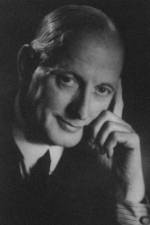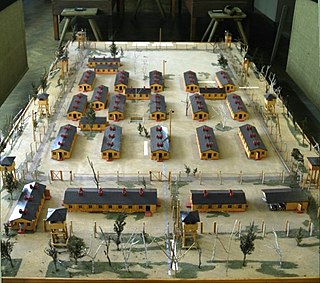Related Research Articles

The Kreisau Circle (1940–1944) was a group of about twenty-five German dissidents in Nazi Germany led by Helmuth James von Moltke, who met at his estate in the rural town of Kreisau, Silesia. The circle was composed of men and a few women from a variety of backgrounds, including those of noble descent, devout Protestants and Catholics, intellectuals, military personnel, socialists and conservatives. Despite their differences, the members of the Kreisau Circle found common interest in their opposition to Hitler's regime on moral and religious grounds. At their meetings, the circle discussed how they would reorganize the German government after the end of the Third Reich.

The People's Court was a Sondergericht of Nazi Germany, set up outside the operations of the constitutional frame of law. Its headquarters were originally located in the former Prussian House of Lords in Berlin, later moved to the former Königliches Wilhelms-Gymnasium at Bellevuestrasse 15 in Potsdamer Platz.
The Austrian resistance was launched in response to the rise of the fascists across Europe and, more specifically, to the Anschluss in 1938 and resulting occupation of Austria by Germany.

The Dachau trials, also known as the Dachau Military Tribunal, handled the prosecution of almost every war criminal captured in the U.S. military zones in Allied-occupied Germany and in Allied-occupied Austria, and the prosecutions of military personnel and civilian persons who committed war crimes against the American military and American citizens. The war-crime trials were held within the compound of the former Dachau concentration camp by military tribunals authorized by the Judge Advocate General of the U.S. Third Army.
The Solf Circle was an informal gathering of German intellectuals involved in the resistance against Nazi Germany. Most members were arrested and executed after attending a tea party in Berlin on 10 September 1943 at the residence of Elisabeth von Thadden. The group's downfall also ultimately led to the demise of the Abwehr in February 1944.
Erich Vermehren, also known as Erich Vermeeren de Saventhem or Eric Maria de Saventhem, was an ardent anti-Nazi, an agent of the Abwehr, the German military intelligence organization, and later a leading Catholic Traditionalist.

Bernhard Bästlein was a German Communist and resistance fighter against the Nazi régime. He was imprisoned very shortly after the Nazis seized power in 1933 and was imprisoned almost without interruption until his execution in 1944, by the Nazis. Nonetheless, he was one of the most important leaders of German Resistance.

Otto Carl Kiep was the Chief of the Reich Press Office (Reichspresseamt). He became involved with the resistance against the Nazis and was executed in 1944.

Arthur Heinrich Ludwig Zarden was a leading personality in German tax legislation and for a short time State Secretary in the Reich Finance Ministry.

Elisabeth Adelheid Hildegard von Thadden was a German progressive educator and a resistance fighter against the Nazi régime as a member of the Solf Circle. She was sentenced to death for conspiring to commit high treason and undermining the fighting forces (Wehrkraftzersetzung).

The Bullenhuser Damm School is located at 92–94 Bullenhuser Damm in the Rothenburgsort section of Hamburg, Germany – the site of the Bullenhuser Damm Massacre, the murder of 20 children and their adult caretakers at the very end of World War II's Holocaust – to hide evidence they were used as human subjects in brutal medical experimentation.

The Abwehr was the German military-intelligence service for the Reichswehr and the Wehrmacht from 1920 to 1944. Although the 1919 Treaty of Versailles prohibited the Weimar Republic from establishing an intelligence organization of their own, they formed an espionage group in 1920 within the Ministry of Defence, calling it the Abwehr. The initial purpose of the Abwehr was defense against foreign espionage: an organizational role that later evolved considerably. Under General Kurt von Schleicher the individual military services' intelligence units were combined and, in 1929, centralized under Schleicher's Ministeramt within the Ministry of Defence, forming the foundation for the more commonly understood manifestation of the Abwehr.

The Haidari concentration camp was a concentration camp operated by the German Schutzstaffel at the Athens suburb of Haidari during the Axis occupation of Greece in World War II. Operating from September 1943 until it was shut down in September 1944, it was the largest and most notorious concentration camp in wartime Greece, becoming known as the "Bastille of Greece".

The Stalag Luft III murders were war crimes perpetrated by members of the Gestapo following the "Great Escape" of Allied prisoners of war from the German Air Force prison camp known as Stalag Luft III on March 25, 1944. Of the 76 successful escapees, 73 were recaptured, most within several days of the breakout, 50 of whom were executed on the personal orders of Adolf Hitler. These executions were conducted shortly after the prisoners' recapture.

Walther Gottlieb Louis Leisler Kiep was a German politician of the Christian Democratic Union (CDU). He was a member of the Bundestag between 1965 and 1976 and again from 1980 to 1982. After switching to state-level politics, he served as minister of economy (1976–77) and minister of finance (1976–80) in Lower Saxony under Ernst Albrecht. In 1982, Kiep was the leading candidate for the CDU in two successive state elections in Hamburg, losing both to incumbent Klaus von Dohnányi. From 1971 until 1992, he was treasurer of his party at the federal level. In this position, Kiep installed a system of unreported income accounts, leading to the CDU donations scandal in 1999.

At the outbreak of World War II, the Society of Jesus (Jesuits) had some 1700 members in Nazi Germany, divided into three provinces: Eastern, Lower and Upper Germany. Nazi leaders had some admiration for the discipline of the Jesuit order, but opposed its principles. Of the 152 Jesuits murdered by the Nazis across Europe, 27 died in captivity or its results, and 43 in the concentration camps.

Walter Bohne was a German communist and resistance fighter against Nazism.

Johanna Susanne Elisabeth Solf was a member of the German resistance to Nazism and the founder of the Solf Circle group of intellectuals, opposed to the Nazi regime.

So'oa'emalelagi Gräfin von Ballestrem was a part of the German resistance to Nazism as a member of the Solf Circle. She was born in Vailima, German Samoa as the daughter of Wilhelm Solf, the German colonial governor, and Hanna Solf. Her Samoan birth name was typically abbreviated to Lagi.

The Hamburg State Police Headquarters was the central office of the Geheime Staatspolizei (Gestapo) in Hamburg during the National Socialist era. Its predecessor was the Hamburg State Police, which was officially called the Secret State Police from December 1935. The Hamburg Gestapo office was later elevated to control center and was ultimately the superior authority of various Gestapo branch offices in northern Germany. Members of the Hamburg Gestapo were significantly involved in the persecution and mistreatment of opponents of the Nazi regime, Jews and other Nazi victim groups. After the British Army marched into Hamburg in early May 1945, former members of the Hamburg Gestapo were for the most part interned and often had to answer for their actions in court. At the former Gestapo headquarters Hamburger Stadthaus, the victims of state police persecution are commemorated today by a memorial plaque and Stolpersteine. The City of Hamburg is planning to set up a documentation site for the memory of the victims of police violence there. There is currently no comprehensive academic study on the Hamburg Gestapo.
References
- ↑ Vater Paul Reckzeh bei DNB; VIAF = 55110586
- ↑ Zitat aus der Anklageschrift bei Leide
- ↑ Werkentin, Falco (8 September 2010). Politische Strafjustiz in der Ära Ulbricht: Vom bekennenden Terror zur verdeckten Repression (in German). Ch. Links Verlag. ISBN 978-3-86284-022-9.
- ↑ see german Wikipedia de:Paul Reckzeh
- ↑ see german Wikipedia de:Paul Reckzeh